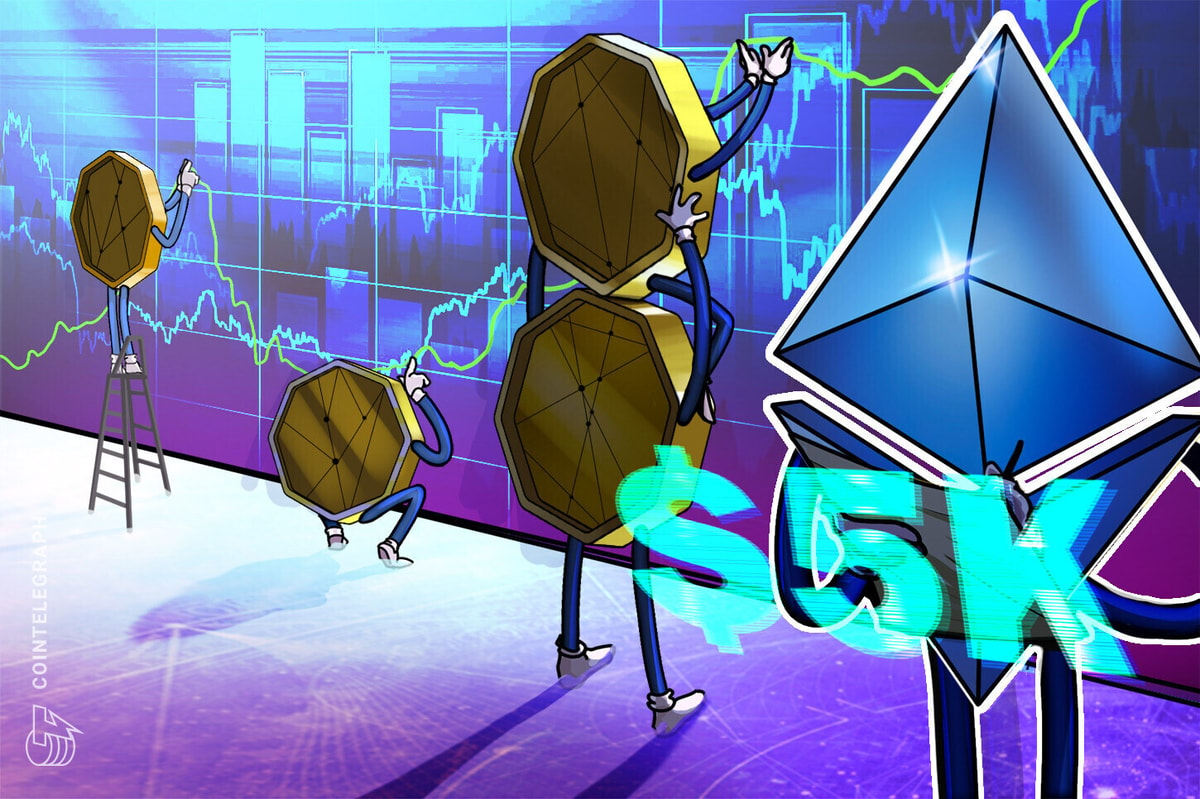Ether (ETH), the native token of the Ethereum network, has risen by 5.5% since Dec. 27, even though it failed to break above the $2,400 resistance. Traders are now questioning what has been driving the price of Ether up and whether these factors remain of importance.
Ether price reaches a 19-month high as traders anticipate a rally above $2,500
The intraday high of $2,446 on Dec. 28 was last seen over 19 months ago. This increase occurred while the broader cryptocurrency market capitalization remained flat at $1.68 trillion. This suggests that Ether’s price could continue its bullish momentum toward $2,500, despite the average transaction fee exceeding $5. While this may not seem excessive, it can be burdensome for most decentralized application (DApp) users.
One can easily fall for the narratives that competing chains are gaining relevance, as critics claim that the Ethereum network has failed due to its limited capacity for scaling and privacy solutions at the base layer level. This negative conversation has been heightened by the recent outperformance of Solana’s SOL (SOL) and Binance’s BNB (BNB), which have gained 78% and 44%, respectively, in the past 30 days. As an example, an experienced Solana ecosystem developer, Matty Taylor, posted about this issue on X (formerly Twitter).
Some info for anyone pushing the narrative that Ethereum is best positioned to become the RWA/institutional chain:
— mattytay (@mattytay) December 28, 2023
TradFi institutions are even more sensitive than memecoin traders to fees, speed & overall infra performance.
See why Visa chose @Solana.https://t.co/tNGpgvNekG
However, this analysis fails to consider the undeniable success of Ethereum layer-2 blockchains and the dominance of the Ethereum Virtual Machine (EVM). Moreover, the Ethereum network’s total value locked (TVL) of $29.6 billion invalidates much of the negative assessment. In comparison, BNB Chain holds a mere $3.6 billion TVL, while Solana’s latest data stands at $1.4 billion, according to DefiLlama.
One might argue that not every DApp requires a huge TVL, and even the decentralized finance (DeFi) industry is working to maximize the usage of its deposits. Therefore, other metrics such as transactions and the number of active addresses are better suited to measure adoption.

Apart from its absolute layer-1 dominance, the Ethereum network has posted a 38% growth in volumes over the past seven days, distancing itself from BNB Chain and Solana. Notable highlights on Ethereum include Uniswap’s $20 billion volume in the period, followed by Balancer’s $9.4 billion and Cowswap’s $900 million. In comparison, BNB Chain’s leading application, PancakeSwap, has gathered $4.2 billion in the same period.
Ethereum’s layer-2 scaling solutions have exceeded expectations in terms of activity
When accounting for Ethereum layer-2 solutions, the ecosystem surpasses any competitor in terms of active addresses engaging with DApps. Besides the established Polygon network, the privacy-focused zkSync Era has catapulted the aggregate Ethereum rollups’ unique active addresses to 2 million in seven days. The zero-knowledge rollup is expected to launch a token in the near future, creating increased demand for its network use.
Related: Why is Solana (SOL) price down today?
Ether’s price increase has also been boosted by research published by Ethereum co-founder Vitalik Buterin on Dec. 28, which proposes a method to reduce the load on validators, theoretically reducing the number of required signatures by 70% and making the process more quantum-resistant. The proposal offers three solutions: decentralized staking pools, a “light” staking method and a rotation between accountable committees.
Lastly, Ethereum’s upcoming upgrade, Cancun, is set to undergo testing starting on Jan. 17. It aims to lower transaction fees and introduces new features for bridges and staking pools. Notably, it will include Ethereum Improvement Proposal 4844, or “proto-danksharding,” which will enhance rollup networks’ efficiency by temporarily storing transaction data in a new format called “blobs,” significantly reducing layer-2 transaction fees.
Data shows that Ether’s rally has been fueled by increased network and ecosystem use, dominance in terms of DApp deposits, and expectations of further improvements stemming from upgrades. Those changes will likely solidify its leadership in terms of smart contract processing and staking mechanisms.
This article does not contain investment advice or recommendations. Every investment and trading move involves risk, and readers should conduct their own research when making a decision.










